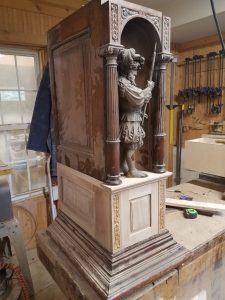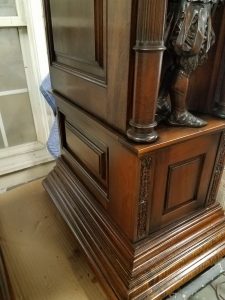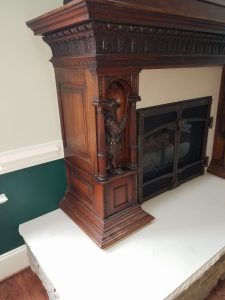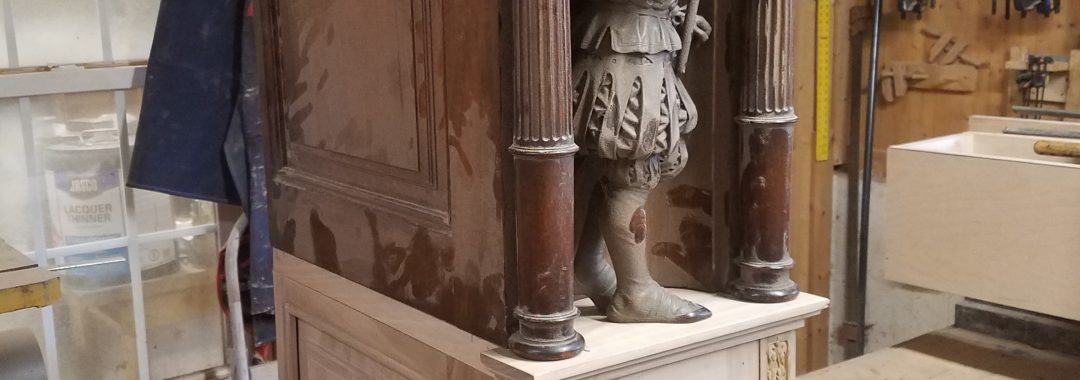
Showing newly created section without finish.
Clients recently purchased a magnificent example of Italian carving, a Nineteenth-Century Renaissance Revival mantlepiece, and hood, all in beautiful European Walnut. They wished to have this installed in their new Raleigh home but immediately ran into a seemingly impossible obstacle.
The opening for the fireplace was to low to meet modern fire codes and for any modern fireplaces. Fortunately, the owners thought of extending the pilasters on either side of the fireplace by inserting a 10” high block of material, either of stone or wood.
When I first looked at the mantlepiece, I knew that any modifications would have to blend perfectly with the original structure. The proportions, the decorative elements, the wood and finish all would have to be considered.
I decided that the best place to insert the “risers” would be just beneath the two carved statues of soldiers which flank the hearth. Their greater elevation would make them more prominent and the vertical flow of decorative molding would continue down the front of the pilasters.

Showing the newly created modification with finishing.
I built two plywood boxes to support the weight of the mantle and provide structure for the addition. The tops of these were covered in solid European walnut with the same elaborate moldings used in similar horizontal pieces in the mantle. The front and sides of the risers were clad in raised panels and I also replicated the carving appearing above the soldiers’ heads.
The original finish and wood have undergone subtle changes due to oxidation, light exposure, and atmospheric pollutants all producing a patina which it would be a crime to destroy through refinishing.
I cleaned the existing finish lightly with mineral spirits, leaving the accumulated grime in the cavities of the carving and the grooves in the molding. I then re-waxed the entire piece with beeswax and hand buffing. The result was to accentuate the carving and molding while enhancing the beauty of the old walnut.
The final step was to take the raw wood of the new components and replicate a 150-year-old finish and generations of waxing and polishing.
A coat of amber shellac sealed the wood and brought out the warmth of the walnut. A series of applications of different tints of aniline dye replicated the depth of the color of the old wood.
The Beautiful End Result:

Here is the restored & modified mantle installed in the clients home.
Dark walnut die was brushed into the recesses of the moldings and carvings. A very light coat of tinted finish replicated the old original varnish which had darkened with age. Finally, several coats of clear varnish protected the wood and hand waxing created the same sheen as the old.
With the skill and versatility of the Living Stone Building Company, the mantle was reassembled in the owners two-story living room, standing on their custom stone hearth.
A modern, gas fireplace with cast iron doors complements the character of the mantle. Special provisions were made to protect the mantle from the heat of the fire.

